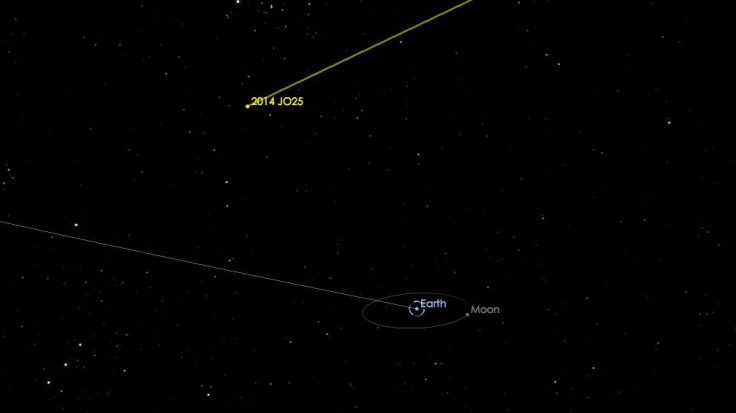NASA: Asteroid Expected To Fly By Earth Wednesday

The Earth will make it past Wednesday despite an asteroid flyby expected about 1.1 million miles out.
Asteroid 2014 JO25 was discovered in 2014 through NASA's Near Earth Observations Program in collaboration with the University of Arizona. It's estimated to be about 2,000 feet and highly reflective making it easy to spot, with a telescope.
Read: Mars Crater Mystery: Did A Triple Asteroid Make This Weird Depression?
It will be back lit though, coming from the direction of the Sun. After the Wednesday the asteroid will be visible in the night sky with small optical telescopes for a night or two, says NASA. While smaller asteroids come this close to Earth regularly this is the largest to pass at this distance since the Toutatis asteroid in 2004.
NASA Asteroid 2017
We're safe from the asteroid, but some people jokingly wished we weren't.
they keep promising us we might get hit by an asteroid but they always miss
— Matt Pearce 🦅 (@mattdpearce) April 18, 2017
Others were saying it didn't need to destroy Earth.
Others were hoping for an unlikely outcome.
unlikely, eh? pic.twitter.com/xfbfZWLbgy
— Tom Evans (@taevans) April 18, 2017
so you're saying theres a chance?
— Mikey (@Typical_Mikey) April 12, 2017
People may get their wish in 2027 when the asteroid 1999 AN10 will fly by at just 236,000 miles, says NASA.
© Copyright IBTimes 2024. All rights reserved.











